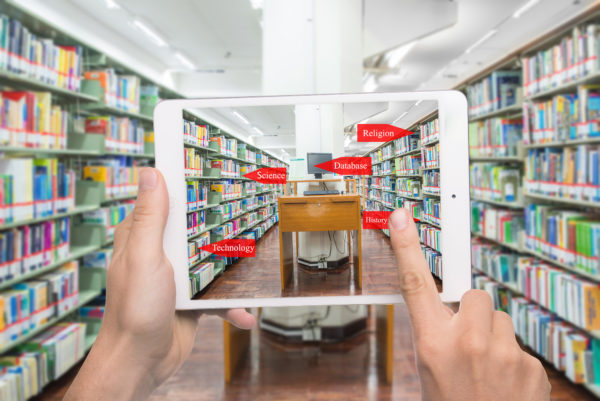By now, most educators are familiar with augmented reality (AR) and its application in the classroom. And as it grows in popularity, its potential in the classroom grows, too.
Augmented reality overlays digital information on top of an existing environment, and the AR device market is expected to reach more than $659 million by 2018, according to an infographic that analyzes AR’s potential for the classroom [1].
Fun fact: One of the first commercial applications of AR technology was the yellow first down line that started appearing in televised NFL games in the late 1990s.
Google glass and heads-up displays in car windshields are probably the most well-known consumer AR products, but the technology is used in other industries, such as marketing, health care, tourism and public safety.
But AR also can make learning more engaging.
(Next page: Resources and new uses for classroom AR)
Popar Toys [2] uses classroom AR to create interactive books about planets, bugs, dinosaurs, and more. Interactive charts bring a new level of engagement to learning on topics such as human anatomy, the periodic table, and the solar system.
Daqri [3] enables users to create their own classroom AR projects.
Two Guys and Some iPads [4] features AR gurus who share a number of ways to incorporate AR into the classroom, and they offer practical examples of the simple ways teachers across the world use AR.
Chromville [5] uses characters to promote storytelling skills, and the classroom component offered through the app gives students the chance to complete AR-enhanced coloring pages.
Emerging classroom AR applications include:
1. Homework mini-lessons: Students scan a page of their homework and the page reveals a video of their teacher helping them solve a problem
2. Book reviews: Students record themselves giving a brief review of a novel they read, and the attach the assigned digital information to the book. Anyone can scan the cover of the book and access the review.
3. Yearbooks: Yearbook tributes, video profiles, sports highlights and concert footage are all capable of being enhanced by AR.
4. Word walls: Students can record themselves providing the definitions to different vocabulary words on a word wall. Then, other students can use an AR app to make a student “pop up” on their screen, telling them the definition and using the word in a sentence.
5. Lab safety: Triggers (images that activate media when scanned by an AR-enabled device) around a science classroom so that students can scan them and learn different safety procedures and protocols for lab equipment.
6. Deaf and hard-of-hearing sign language flashcards: AR-enabled flashcards can contain video overlays showing students with hearing challenges how to sign a word or phrase.
